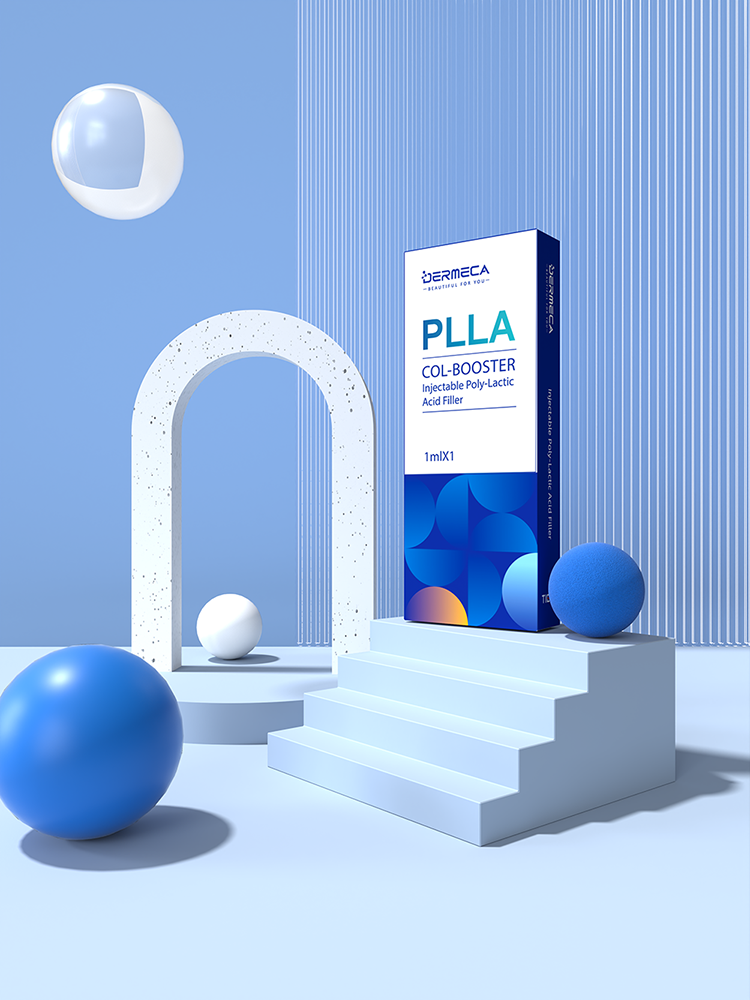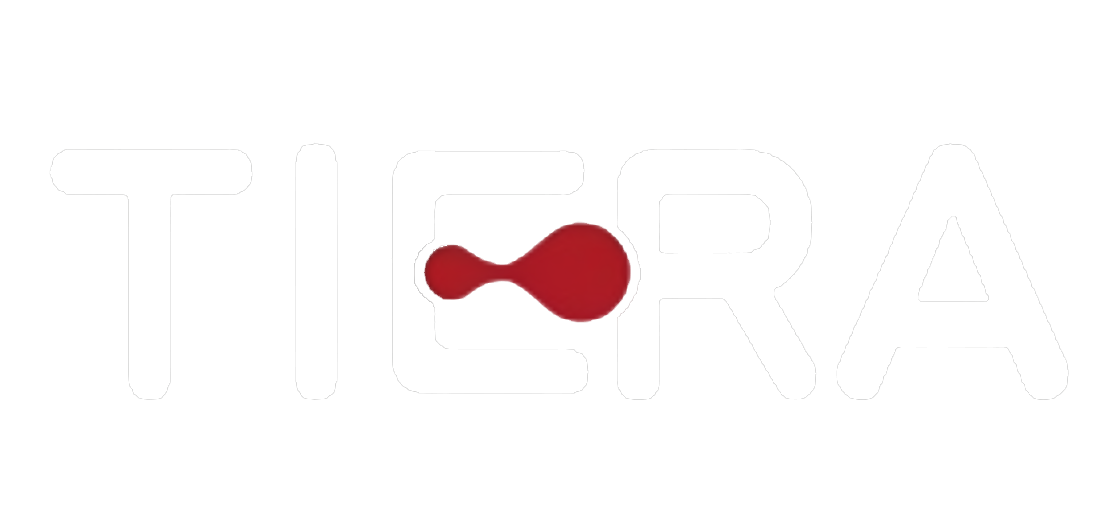주름과 안면 볼륨 손실의 과학적 원리
볼륨 손실과 주름 형성 간의 연관성 이해하기
얼굴은 세 가지 주요 요인이 동시에 발생함에 따라 노화가 진행됩니다: 볼륨 감소, 지지 구조의 처짐, 그리고 피부 질감의 저하입니다. 약 50세 무렵이 되면 중안부 지방의 35%에서 65% 정도를 잃게 되며, 그 아래 뼈 밀도도 일부 감소하게 됩니다. 이로 인해 2023년 JCAD 연구에 따르면 실제로보다 주름을 더 깊어 보이게 만드는 움푹 들어간 부위가 생깁니다. 지지 구조가 약해지기 시작하면 피부는 마치 접히듯이 주름으로 처지게 됩니다. 이를 일명 '아코디언 효과(accordion effect)'라고 부릅니다. 기본적으로 지지력이 사라진 조직들이 시간이 지남에 따라 압축되면서 우리가 모두 피하려 애쓰는 단단한 주름이 형성되는 것입니다.
정적 주름과 동적 주름: 주름 개선 필러가 두 가지 유형의 주름을 어떻게 해결하는가
| 주름 유형 | 이유 | 필러 솔루션 |
|---|---|---|
| 정적 | 볼륨 손실 + 콜라겐 분해 | HA 필러가 지지 구조를 회복시킴 |
| 동적 | 근육 수축 + 얇아진 진피 | 콜라겐 생성 유도 필러 |
필러는 두 가지 유형의 주름을 모두 효과적으로 해결합니다. 히알루론산(HA)은 즉시 손실된 볼륨을 대체하여 정적 주름을 부드럽게 만들며, 하이드록시아파타이트 칼슘과 같은 생체자극제는 섬유아세포를 활성화시켜 6개월 이내에 콜라겐 생성을 최대 72%까지 증가시킵니다. 리주벤테이션 리소스 2023 이는 동적 주름에 대한 피부 탄력을 개선시킵니다.
왜 볼륨 감소를 해결하는 것이 장기적인 주름 감소의 핵심인지
주름을 치료할 때 볼륨을 회복하지 않고 표면 처리만 하는 것은 무너져 내리는 벽에 새 페인트를 칠하는 것과 같습니다. 최근 <미용성형외과 저널>(Aesthetic Surgery Journal)에 발표된 연구에 따르면, 볼륨 회복과 더불어 표면 치료를 함께 받은 사람들은 2년 후에도 피부가 약 80% 더 매끄럽게 유지되는 반면, 신경이완제(보톡스 등)에만 의존한 그룹은 약 45% 정도의 개선만 나타냈습니다. 얼굴의 젊은 시절 삼각형 윤곽을 재구성하면 피부 자체에 가해지는 긴장이 실제로 줄어듭니다. 이와 같은 긴장 완화는 깊은 주름이 영구적으로 형성되는 것을 막는 데 도움이 됩니다. 주름에 대해 진정한 장기적인 결과를 얻으려면, 바로 아래층의 볼륨을 적절히 채우는 것이 필수적입니다.
히알루론산 필러가 즉각적인 주름 개선 및 볼륨 효과를 제공하는 방법 
작용 기전: 수분 공급, 리프팅 및 구조적 지지
히알루론산 필러는 피부 조직에 주입하면 세 가지 주요 효과를 발휘합니다. 하나는 리프팅 효과이고, 다른 하나는 피부 내부 구조를 지지하는 데 도움을 줍니다. 이 가교결합 젤은 약 1ml로, 자체 무게의 약 1,000배에 달하는 수분을 보유할 수 있습니다. 이렇게 되면 조직이 즉시 도톰해지면서 피부 표면 아래에 일종의 틀을 형성하여 얼굴 주변의 늘어진 부분을 들어 올리는 데 도움을 줍니다. 2025년 성형외과 글로벌 오픈(Plastic and Reconstructive Surgery Global Open)에 발표된 연구에 따르면, 이러한 특성 때문에 의사들은 얼굴 중앙의 밋밋함과 얼굴 근육을 움직이지 않아도 나타나는 완고한 주름을 치료하기 위해 히알루론산 필러를 자주 사용합니다. 이러한 주름은 시간이 지남에 따라 우리 몸에서 콜라겐이 손실되기 시작하면서 발생하는 경향이 있습니다.
주름 즉각적인 개선 및 얼굴 윤곽 회복
사람들은 보통 치료 후 비교적 빠르게 결과를 확인할 수 있으며, 몇 시간 이내에 미소 주름과 마리오네트 라인 영역의 깊은 주름이 약 절반에서 4분의 3 정도 줄어든 것을 볼 수 있습니다. 히알루론산(HA) 젤의 특별한 점도 덕분에 볼륨이 감소하기 쉬운 부위인 볼, 턱선, 눈 밑 패임 등을 조각하듯이 형성하고 윤곽을 명확히 하며 매끄럽게 다듬는 것이 가능합니다. 기존의 일부 시술은 효과가 나타나기까지 수주에서 수개월이 소요되지만, HA 필러는 즉각적인 결과를 제공하므로 외모 개선을 빠르게 원하는 사람들이 이를 선호하는 이유입니다.
HA 필러의 안전성, 되돌릴 수 있는 특성 및 이상적인 시술 부위
FDA는 부작용 발생률을 1.2% 미만으로 보고하고 있으며, 이는 HA 필러 전반적으로 꽤 안전하다는 것을 의미합니다. 특히 입술이나 입가 모서리와 같은 까다로운 부위에 사용할 때 더욱 그렇습니다. 하지만 무엇보다도 큰 차이점은 문제가 생겼을 경우 히알루로니다제라는 물질을 이용해 효과를 되돌릴 수 있다는 점입니다. 이 덕분에 과도하게 주입되거나 불균형한 결과가 나타났을 때 빠르게 수정할 수 있습니다. 최근 제가 읽어본 대부분의 미용 전문가들에 따르면, 영구적인 필러는 한 번 시술하면 영원히 그대로 남는 반면 HA 필러는 이런 유연성이 가능합니다. 대부분의 시술 의료진들은 얼굴의 표정 움직임과 자연스럽게 어우러져 시술 후에도 뻣뻣하거나 인공적인 느낌 없이 자연스러운 결과를 제공하기 때문에 입 주변 부위 시술에 HA 제품을 선호하는 것으로 보입니다.
생체자극성 필러: 콜라겐 재생을 통한 장기적 볼륨 유지 및 주름 예방 
스컬프트라와 라디에쎄가 새로운 콜라겐 생성을 자극하는 원리
생체자극 필러인 스컬프트라(폴리-L-락틱산 또는 PLLA를 포함)와 레디세스(칼슘 하이드록시아파타이트 또는 CaHA로 제조됨)는 히알루론산 필러와는 다르게 작용하는데, 이들은 실제로 신체가 자체적으로 더 많은 콜라겐을 생성하도록 유도합니다. 이러한 제품들은 피부 깊은 곳에 위치한 섬유아세포를 자극하는 통제된 염증 반응을 유발합니다. 이 섬유아세포는 기본적으로 피부를 탄탄하고 단단하게 유지하는 역할을 하는 '노동자'와 같습니다. 특히 스컬프트라의 경우, 미세한 PLLA 입자가 피부 내부에서 작은 지지대 역할을 하며, 연구에 따르면 이로 인해 약 6개월 이내에 콜라겐 생성이 약 64% 정도 증가할 수 있습니다. 레디세스의 경우 즉각적인 볼륨을 제공하지만, 동시에 장기적으로 새로운 콜라겐 생성을 서서히 유도하는 효과도 지속됩니다. 대부분의 사람들은 치료 후 결과가 개인의 신체 반응에 따라 12개월에서 최대 18개월 정도 지속되는 것으로 경험합니다.
점진적 결과 대 즉각적 교정: 환자의 기대 관리
HA 필러는 즉시 약 80~90%의 가시적인 개선 효과를 제공하는 반면, 바이오스티뮬레이터는 초기에는 약 30% 정도의 개선부터 시작합니다. 하지만 최종 효과는 시간이 지나야 나타나며, 일반적으로 피부 아래층의 콜라겐 생성이 재개되기 시작하는 3~6개월 사이에 완전한 효과가 드러납니다. 많은 사람들이 이러한 서서히 진행되는 변화를 오히려 선호하는데, 특히 작년 미용 트렌드 관련 연구에 따르면 사소한 개선을 원하는 사람들 중 약 2/3가 극적인 변화보다 자연스러운 외관을 선호하는 것으로 나타났습니다. 의사들도 이러한 기대치 관리에 점점 더 능숙해지고 있으며, 상담 시 흔히 3D 영상 시스템을 활용하고 매달 정도로 정기적인 점검을 통해 시간이 지남에 따라 어떻게 변화하는지 지속적으로 모니터링합니다.
지속적인 진피 지원을 통한 미래 주름 예방 역할
안면 리주비네이션의 경우, 생체자극성 필러는 피부 아래층을 강화함으로써 작용하여 기존 주름을 개선하고 향후 새로운 주름 형성을 예방합니다. 이러한 치료는 볼과 같은 시술 부위의 피부 두께를 실제로 증가시키며, 때로는 약 0.5밀리미터 정도 더 두꺼워지게 합니다. 이 추가된 두께는 마치 지지대 역할을 하여 얼굴 표정을 짓거나 하루 종일 입 주변을 움직일 때 쉽게 접히지 않도록 해줍니다. 사람들은 점점 이러한 유형의 치료를 더 선호하게 되고 있습니다. 현재 미용시술을 받는 사람들 중 약 57%가 일시적으로 문제를 가리는 것이 아니라 장기적으로 효과를 내는 것을 원하기 때문에 생체자극제를 선택하고 있습니다. 이러한 추세는 노화의 징후가 나타날 때마다 단순히 덮는 것이 아니라 피부를 내부부터 건강하게 유지하는 데 초점을 맞추는 '천천히 노화하기(slow aging)'라는 개념과도 일치합니다.
주름 방지 및 볼륨 개선을 위한 최고의 첨단 필러 비교: 가장 효과적인 옵션
Restylane과 Juvederm: 미세한 주름과 은은한 볼륨을 위한 정밀한 히알루론산 필러
Restylane과 Juvederm는 얼굴에 나타나기 시작하는 노화 초기 징후를 개선할 때 히알루론산 필러 중에서도 특히 두각을 나타냅니다. 2023년 『Dermatologic Surgery』지에 발표된 연구에 따르면, 이 제품들은 비주름(콧대에서 입가까지의 주름)과 마리오네트 라인(입가에서 턱까지 내려가는 주름)과 같은 부위의 주름을 68%에서 82%까지 감소시킨 것으로 나타났습니다. 왜 이렇게 효과적일까요? 그 비결은 특수한 가교 결합 젤 제형에 있으며, 이는 즉각적인 볼륨을 제공하고 처진 피부를 들어올려 성가신 주름을 효과적으로 매끄럽게 만들어 줍니다. 많은 시술 의료진들이 입술이나 눈 밑과 같은 까다로운 부위에 이러한 필러를 선호하는데, 필요한 경우 반전이 가능하고 얼굴 표정 움직임에 자연스럽게 따라 움직이기 때문입니다. 극적인 변화보다는 약간의 개선만이 필요한 부위에서는 이러한 특성이 매우 중요한 차이를 만듭니다.
라디에스와 스컬프트라: 깊은 볼륨과 구조적 리프팅을 위한 고밀도 필러
볼과 턱 주변의 심한 볼륨 손실을 다룰 때, 의사들은 더 확실한 결과를 위해 종종 라디에스나 스컬프트라 치료를 선택합니다. 2023년의 최근 연구에 따르면 스컬프트라는 6개월 동안 콜라겐 생성을 약 40% 증가시켜 입 주변의 깊은 얼굴 주름이 눈에 띄게 개선되는 데 큰 도움이 됩니다. 라디에스는 이와는 다른 방식으로 작용합니다. 즉각적인 볼륨 업 효과를 제공하면서도 시간이 지남에 따라 새로운 콜라겐 생성을 자극합니다. 따라서 변화를 즉시 보고 싶어 하면서도, 장기적으로 피부 아래에서 계속 작용하여 주름이 다시 생기는 것을 막아주는 효과를 원하는 사람들에게 특히 적합합니다.
주름의 깊이와 얼굴 부위에 따라 적절한 필러 선택하기
| 인자 | HA 필러 (레스틸렌/쥬비덤) | 생체자극형 필러 (라디에스/스컬프트라) |
|---|---|---|
| 가장 좋은 | 미세 주름, 동적 주름 | 깊은 주름, 골격성 볼륨 손실 |
| 효과 발생 시점 | 즉시 (1-3일) | 점진적 (3-6개월) |
| 기간 | 6-12 개월 | 18-24개월 |
의사들은 표준화된 척도와 해부학적 구역 분류를 사용하여 주름의 심각도를 평가하고, 미세한 주름 부위에는 히알루론산(HA)을, 구조적 결손 부위에는 생자극제(biostimulators)를 선택한다. 2023년 메타분석에 따르면, 표면 질감과 볼륨 손실 모두를 대상으로 하는 맞춤형 필러 조합은 환자 만족도 93%를 달성한다.
포괄적인 젊어짐 효과를 위한 복합 치료로 결과 극대화
신경조절제와 필러 병용을 통한 주름 개선 효과 강화
피부 필러와 보톡스와 같은 신경조절제를 함께 사용하면 많은 사람들이 얼굴 리주비네이션을 위한 최적의 조합이라고 부르는 결과를 만들어냅니다. 신경조절제는 찡그릴 때 생기는 이마 주름과 같은 동적 주름을 유발하는 근육을 진정시켜 작용합니다. 동시에 히알루론산 필러는 입 주변의 정적 주름, 즉 웃을 때 생기는 미소 주름 등 볼륨 손실로 인한 문제를 해결합니다. 2025년 얼굴 리주비네이션 보고서의 최근 데이터를 살펴보면, 이러한 시술을 병행할 경우 더 나은 결과를 얻는 경우가 대부분인 것으로 나타났습니다. 단일 치료 방법만 사용했을 때 42%에 그친 것과 달리, 병행 치료 시 약 78%가 주름이 절반 이상 개선되었다고 보고했습니다. 이 접근법이 특히 효과적인 이유는 노화의 다양한 측면을 동시에 해결하기 때문으로, 표면적인 문제뿐 아니라 시간이 지남에 따라 피부 아래에서 발생하는 더 깊은 구조적 변화까지도 다룬다는 점입니다.
필러 종류를 레이어링하여 볼륨과 피부 질감을 동시에 개선
최신 프로토콜에서는 최적의 결과를 얻기 위해 종종 서로 다른 유형의 필러를 계층적으로 사용합니다:
| 채우기 유형 | 메커니즘 | 시술 결과 타임라인 | 가장 좋은 |
|---|---|---|---|
| HA 필러 | 즉각적인 볼륨 증가 | 0-2주 | 미세한 주름 부드럽게 개선 |
| 생체자극성 | 콜라겐 재생 | 3-6개월 | 피부 탄력 개선 |
표준 접근법은 즉각적인 윤곽 교정을 위해 히알루론산(HA) 필러로 시작하고, 그 후 Sculptra 또는 Radiesse를 사용하여 깊은 지지 구조를 강화하는 것입니다. 2023년 연구에 따르면 단일 성분 치료에 비해 계층적 요법을 적용했을 때 환자 만족도가 65% 증가했습니다.
안면 노화 유형에 기반한 맞춤형 치료 계획
첨단 3D 안면 맵핑 기술을 통해 임상의는 환자를 뚜렷한 안면 노화 표현형으로 분류할 수 있습니다:
- 볼륨 감소형 (중안면 함몰)
- 중력 작용형 (턱선 처짐)
- 주름 집중형 (입 주변/미간 주름)
- 혼합형
이러한 분류를 통해 볼 필러와 눈썹 신경조절제를 병행하는 등 볼륨 중심 케이스에 맞춤화된 시술이 가능해지며, 균형 잡힌 조화를 위해 관자놀이에 스컬프트라와 입술에 히알루론산 필러를 함께 사용할 수 있다. 개인 맞춤형 계획은 전략적으로 일괄 적용하는 방식 대비 재시술률을 41% 낮추고 결과의 지속 기간을 4~7개월 연장한다.
자주 묻는 질문
주름과 얼굴 볼륨 손실의 주요 원인은 무엇인가요?
주요 원인은 볼륨 손실, 구조적 처짐 및 피부 질감 저하입니다. 나이가 들면서 중안면의 지방과 뼈 밀도가 줄어들게 되며, 이로 인해 주름이 더 두드러지게 나타납니다.
정적 주름과 동적 주름의 차이는 무엇인가요?
정적 주름은 볼륨 손실과 콜라겐 저하로 인해 생기며, 동적 주름은 근육 수축과 얇아진 진피층으로 인해 발생합니다.
히알루론산 필러란 무엇이며 어떻게 작용하나요?
히알루론산 필러는 피부 구조를 수분 공급하고 리프팅하며 지지하는 데 사용됩니다. 즉각적인 볼륨을 제공하며 많은 양의 물을 보유할 수 있어 주름과 처진 피부를 완화시켜 줍니다.
필러 시술은 반대로 되돌릴 수 있나요?
예, 히알루론산 필러는 히알루로니다제라는 효소를 사용해 녹일 수 있으므로 더 안전하며 조정이 가능합니다.
바이오스티뮬레이션 필러란 무엇이며 주름 예방에 어떻게 도움이 되나요?
스컬프트라와 레디에스처럼 바이오스티뮬레이션 필러는 신체의 콜라겐 생성을 자극하여 장기적인 주름 예방과 볼륨 회복을 제공합니다.
주름의 깊이와 얼굴 부위에 따라 필러를 어떻게 선택해야 하나요?
히알루론산 필러는 미세한 주름과 동적 주름에 이상적이며, 바이오스티뮬레이션 필러는 깊은 주름과 골격성 볼륨 손실에 적합합니다.


